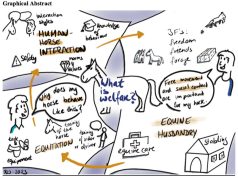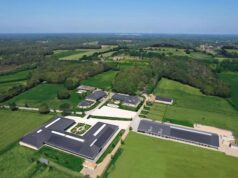By F. Pilgger, L. Kroschel, J. Aurich, C. Nagel, G. Hoffman, U. Hartmann, C. Aurich
Graphics and Tables: The authors
The pretraining of young Warmblood induces a stress response. The non-ridden pretraining of 18- and 30-month-old stallions is a mental challenge. Even 18-month-old stallions habituated rapidly to the demands of pretraining. Group housing had no stress-reducing effects compared to housing in single boxes. Pretraining of young stallions does not raise animal welfare concerns.
Warmblood sires traditionally have been presented for stallion licencing at two years of age, but the age at which horses are mentally fit for training is a point of controversy. We have therefore investigated the stress response of young stallions to pretraining for licencing. Salivary cortisol concentration, heart rate and heart rate variability (HRV) were determined repeatedly over 12 weeks. Stallions were 24 and 30 months old and either housed in groups or individual boxes (Group 24, n = 9; Box 24, n = 10; Box 30, n = 10).
Pretraining included free movement in an indoor arena, training in a horse walker, lunging and jumping of obstacles without rider. In addition, group-housed 18-month-old stallions (Group 18, n = 10) underwent an abbreviated programme with only free movement and horse walker exercise. We hypothesised that the stress response to pretraining is reduced by group housing but not affected by age.
In stallions of all groups, cortisol concentration increased in response to pretraining events (P < 0.001). Cortisol release differed among events (P < 0.001) was most pronounced after free movement in weeks 1 and 2 and became less pronounced with event repetition (P < 0.001). When horses were in the horse walker for the first time, cortisol release was increased in group-housed in comparison to individually housed stallions (time × stable P < 0.001). An increase (P < 0.001) in heart rate differed among events (P < 0.001) and became smaller with repetition (P < 0.001). The HRV decreased transiently in response to pretraining events (P < 0.001) indicating sympathoadrenal activation. In conclusion, pretraining of young stallions is both a physical and a mental demand and induces a stress response.
With the repetition of events, even stallions as young as 18 months adapted rapidly to these demands. Group housing had no stress-reducing effects. Our study does not provide evidence that the systematic pretraining of young Warmblood stallions raises animal welfare concerns.
Implications
The age at which horses are mentally fit for training is a point of controversy. Based on the stress hormone cortisol in saliva and changes in heart rate and heart rate variability, the present study indicates that a non-ridden pretraining of 18-, 24- and 30-months old Warmblood stallions is a physical and mental challenge, inducing a stress response. Group housing of stallions had no stress-reducing effects. With repetition of events, even stallions as young as 18 months habituated rapidly to the demands of pretraining. Our study does not provide evidence that a systematic pretraining of young Warmblood stallions raises animal welfare concerns...
CLICK HERE TO READ THE COMPLETE ARTICLE IN THE ONLINE EDITION OF BREEDING NEWS




